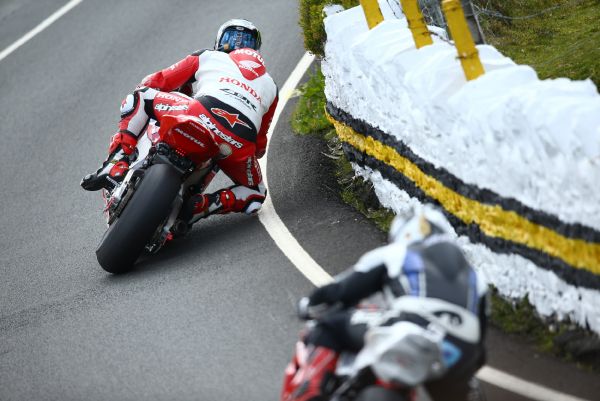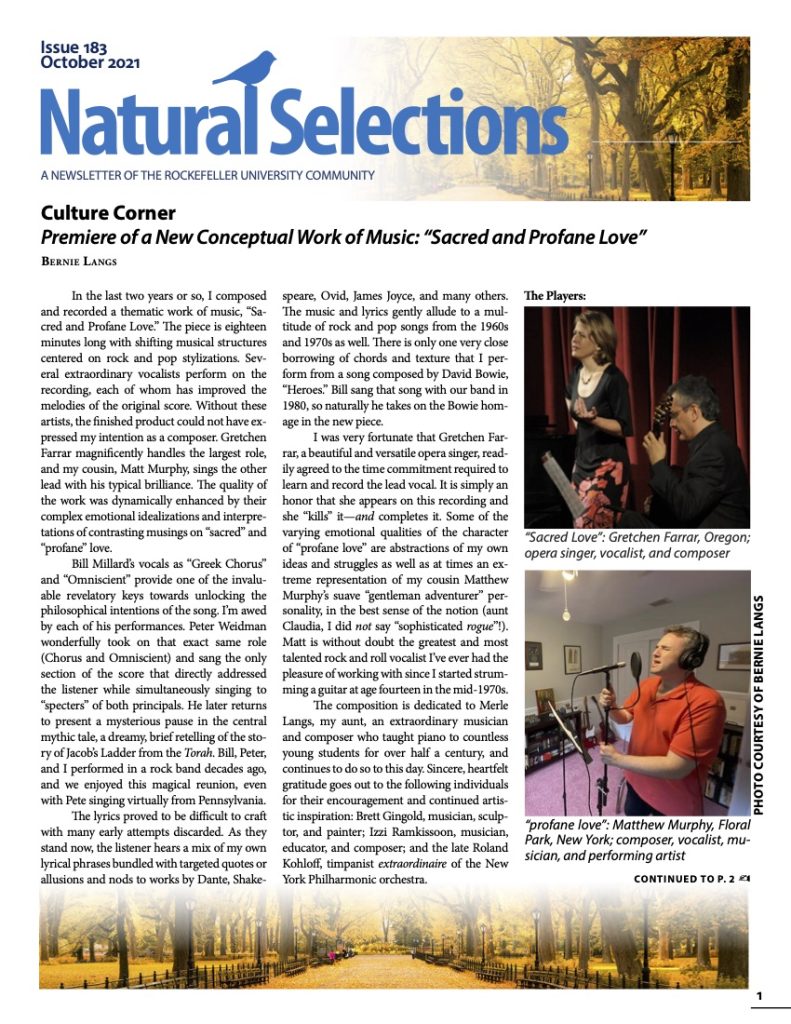The spectrum of the “daredevil” has always been somewhat of a curiosity to me, particularly in the world of motorcycles. There are those that wouldn’t go near a bike if you paid them—I’ve met plenty in that category; those that ride, but are content with the confines of commuting; others such as myself, a former 250cc man that recently graduated to the beastly power of an inline-4 900cc engine, toeing the line in the “twisties” every once in a while—this alone might earn me the classification of daredevil” in some eyes (read: my mum); weekend warriors who test themselves even further, laying rubber down on track days; and of course their professional counterparts that push the limits to extremes on the racetrack; but then there are those, known collectively as complete and utter lunatics, who race motorcycles at speeds approaching 200 miles per hour on tiny country roads lined with dry stone walls, telegraph poles, curbs, houses, and a whole host of other hazards, in the oldest, most dangerous race in the world—The Isle of Man TT.
The Isle of Man TT Festival—TT stands for “Tourist Trophy”, or more colloquially “titanium ____ “ (I’ll let you fill in the blank) —takes place once a year during late May/early June, with a week of practice sessions followed by a week of individual races—culminating in the blue riband event, the senior TT. It has been in existence since 1907, though the current Snaefell Mountain course wasn’t devised until 1911. It’s 37.73 miles run entirely on the Isle of Man’s public roads (closed during racing of course), through tiny villages, hedge-lined country lanes, and a mountain. It contains a staggering 265 corners, said to require at least three years of competitive racing to learn, where six laps amount to 226.5 miles of unflinching mental steel. The races consist of a time trial format, with riders competing as much against the course as the competition. Northern Irishman Michael Dunlop holds the honor of the fastest lap on record, taking just under seventeen minutes to complete the course at a jaw-dropping 133.962 MPH average speed last year. Kiwi Bruce Antsey achieved the unofficial record top speed of 206 MPH during practice. Eighty percent of the race is done at full throttle, which I can tell you as a biker, seems utterly unfathomable. Just watching an on board lap is enough to make you nauseous.
Often considered more infamous than famous, it has a reputation for its unparalleled danger. The mountain course has claimed 251 fatalities to date, with five deaths occurring just last year. Colorful character that he is, mutton-chopped racer/truck mechanic/TV personality Guy Martin refers to “that near-death thing” as the raison d’etre of racing in the TT. On a 2010 crash that almost claimed his life— “The buzz from that was just unbeatable. That moment between crashing and almost dying. That’s raised the benchmark. I want to get back to that point. Money can’t buy it. Everything’s been so sanitised with bloody PC nonsense and health and safety that there’s nothing else is there? If it was dead safe I wouldn’t do it.” To others, this seemingly senseless loss of life provokes a rallying cry for banning the TT entirely. Indeed, safety concerns were a major factor in the race losing its world championship status in 1976.
If I’ve managed to pique your interest at this point, I would urge you to seek out the fascinating 2011 documentary TT3D: Closer To The Edge (the full movie is available on YouTube), or even better go one step further and read Rick Broadbent’s excellent book That Near Death Thing (which takes its name from Guy Martin’s quote). Even to those with little interest in motorcycle racing, it’s hard to deny the fascinating psychology at play here. Gaining a glimpse into what makes road racers risk life and limb for relatively little reward—through early footage of their childhood and interviews with both family members, those involved in the race, and the riders themselves, is a captivating experience. The supporting cast offers an engaging insight as to how people cope with the obvious elephant in the room, balancing the compulsion to race with the threat of death. We hear from the mechanic responsible for fine-tuning all of the top bikes’ engines, and the sense of guilt he feels, likening himself to a drug dealer supplying the fix that might ultimately end a rider’s life. There’s also a compelling interview with Bridget Dobbs, widowed after the death of her husband Paul Dobbs in the 2010 TT. Though left to raise their two children alone, she harbors an amazing resilience in knowing that Paul died doing what he loved, as to those in and around the TT, life is there to be lived, no matter what the risk.
Then there’s the main cast, a veritable band of misfits with a unifying compulsion to race, despite the inherent dangers. There’s stalwart talisman John McGuiness, whose un-athletic figure masks an exceptional talent that’s led him to a remarkable 23 TT wins, just three shy of the record held by the legendary Joey Dunlop. There’s Michael Dunlop—nephew of Joey, whose brother William (son of Joey) also races in the TT. Michael’s practically psychopathic racing instinct has brought him much success and notoriety in recent years, and the Dunlop family were the subject of the 2014 documentary Road, narrated by Liam Neeson. Joey, known as much for his humanitarian work in the Balkans as for his gifts on two wheels, was tragically killed in a little-known road race in Estonia at the age of 48—paying the ultimate price for his steadfast refusal to hang up his leathers for good. His brother Robert (Michael’s father) was killed racing eight years later, and remarkably, a 20-year-old Michael raced and won the TT’s warm up event—The Northwest 200—just two days after burying his father. There’s soft-spoken Yorkshireman Ian Hutchinson—who recovered from nearly losing his leg after being run over by another racer in a closed-circuit race early on in his career, to eventually go on to achieve an unprecedented five wins at the 2010 TT. There’s local boy Connor Cummins, who survived a now infamous crash that left him looking like the Wiley Coyote in a full body cast, only to fully recover and compete in the TT the very next year. In truly legendary fashion, both of these men were told by doctors that they would never race again. Then of course there’s the resident controversy-magnet Guy Martin, whose trademark lack of filter, delivered through a nearly indecipherable Lincolnshire accent, has landed him a legion of fans, but sadly no TT wins so far.
Hollywood is said to be capitalizing on the capacity for epic drama that exists on the Isle of Man, with a Ben Younger (Boiler Room, Bleed for This)–produced movie in the works, rumored to be centering on an American that comes out of retirement to race in the TT. If you replace “American” with “Canadian”, and “comes out of retirement” with “gives up everything to live on the island and race in the TT,” then this story slightly resembles the true-life tale of Mark Gardiner, who wrote about his experience ticking off the pinnacle of the biker’s bucket list in his 2012 book Riding Man.
All that being said, the 2017 Isle of Man TT is fast approaching, with all the potential for a cracking set of races. As with many of the more niche sporting events, television coverage in the US leaves a bit to be desired. Despite a viewership of 30 million people worldwide, to my knowledge none of the practice sessions/races will be available for live viewing on a US TV network. However with a VPN you can access UK channel ITV’s coverage from their on-demand service. and YouTube has a dedicated channel that provides highlights of some of the races. Sharing five wins between them in 2016, Michael Dunlop and Ian Hutchinson are the men to beat, but after a year lay-off, the return of Guy Martin in search of his maiden win will add some tantalizing drama to the mix. No matter how the races play out, you can bet good money that the TT will never be short on excitement.



